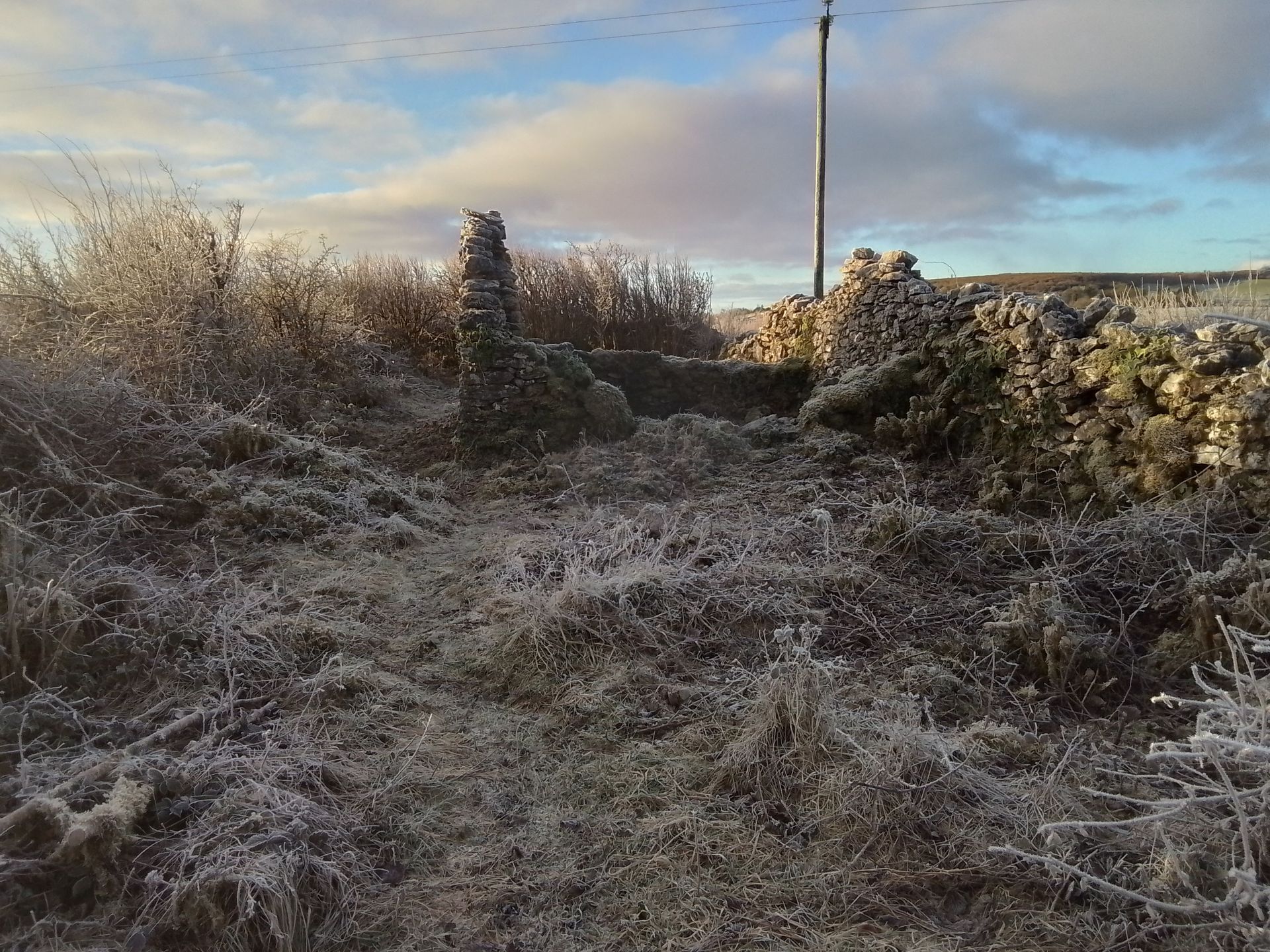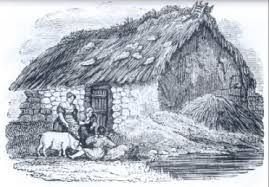REVIVING A PRE-FAMINE CABIN

The Bloods were English settlers who set up demesne initially in Killinaboy, County Clare around 1600. Sometime thereafter they laid out a deer park in the southwestern corner of the Termon townland in Carran. To this day this corner of Termon is known locally as “the deer park”. The extant park walls are monumental in scale. They are conspicuous evidence of lordly privilege.
Deer hunting was most popular in Ireland and Great Britain between 1600 and 1750. However, deer parks fell in to disuse around the middle of the 18th century. The pastime was replaced by fox hunting in the open countryside. The dismantled parks were mostly transformed in to tenanted farmland. This would appear to have been the fate of the Termon park.

The southern boundary wall of the Termon deer park also functions in part as townland boundary – dividing Termon and Fahee North townlands. Sometime after the dismantlement of the park, a small section of the boundary wall was repurposed as one of the gable walls of a pre-famine dwelling. (The house is recorded in the Ordnance Survey “six-inch” maps produced between 1832 and 1846).
Furthermore, the wall is much reduced in scale in the immediate vicinity of the cabin. That would suggest that the stone for the building of the other three sides of the house was drawn from the wall. Thus it would appear that the Bloods gave permission to a tenant family to build the cabin with material from the dismantled deer park. The park was located at the Termon side of the wall whereas the cabin is in Fahee North.
The house would have been recorded as a dwelling of 4th classification in the census of 1841 – a primitive, single-roomed cabin made of mud (or stone in the case of the Burren).

The Fahee North cabin was a small, single-roomed drystone construction which would have been roofed with thatch. It was a ramshackle, primeval structure. It is physical evidence of the most important event in the modern history of Ireland – An Gorta Mór/the Great Hunger 1845-1849. The house has a singular story in that it is a pre-famine dwelling made of material (stone) from the landscape of power of the gentry.
The house had latterly been overwhelmed by scrub. The scrub was removed by the Burren Conservation Volunteers (BCV) in November 2024. A family with a unique story lived in this cabin. Their daily lives ebbed and flowed in a mix of wretchedness and gaiety. Thanks to the BCV the family’s obscured homestead has become a “garden of remembrance”.
Author’s note : The author would like to thank the following for their part in the revival of the dwelling – Karen Dorp and BCV, archaeologist Elaine Lynch, landowner Willie O’Reilly and Burren heritage enthusiast Nick Geh.



